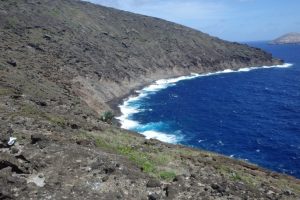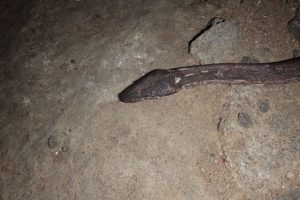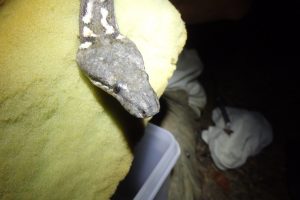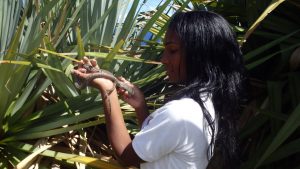
Once upon a time on an island in the Indian Ocean named Mauritius, there were two unique species of snakes belonging to the Bolyeridae family, the Burrowing Boa (Bolyeria multocarinata) and the Keel-scaled Boa (Casarea dussumieri). With human arrival and settlement on this island also came species alien to the island such as the wild pigs and rats, species that predated on the snakes and their eggs or competed with them for prey. This battle resulted into the restriction of the two snake species to only one of the offshore islands to the north of Mauritius, Round Island.

Being remote and difficult to access, the islet was not appealing to people to settle there and consequently Round Island remained rat free. No wonder why Round Island was therefore the perfect refuge to the snakes until early Mauritian settlers decided to put hungry goats and rabbits onto the island as a living larder. They did not know that this action would result in the devastation of the vegetation and cause massive soil erosion to the island. It was not until the 1980s that those two introduced species were completely eradicated from the island leaving almost no soil and only some vegetation behind them due to overgrazing. As a semi-arboreal species the keel-scaled boa was able to survive clinging to the remaining few palm trees that resisted the appetite of the herbivores. Unfortunately for the burrowing boa, with its habitat completely destroyed, it has seen its survival chance reduced to zero. Not seen since 1975, the burrowing boa is now classified as extinct on the IUCN Red list of threatened species, leaving the keel-scaled boa the sole living species of its family.
The keel-scaled boa, typically known as the Round Island boa or split-jaw snake, was estimated to be reduced to only 50 individuals in the 1970s. However, with conservation action involving in the restoration of the previously lost habitat, the island has seen an increase in the boa population. This is mainly due to an increase it its natural prey. The snake is unique among all land vertebrates on earth by having an intramaxilliary joint that can separate the anterior and posterior bones of it upper jaw. This means that the top part of its jaw can bend around what it bites helping it hold onto to prey, like geckos and skinks more effectively.
The conservation of Round Island and the boa is a partnership between the Mauritian Wildlife Foundation, Durrell Wildlife Conservation Trust, and the National Parks and Conservation Service (Mauritius). In 2002 the construction of a field station on Round Island has allowed permanent staff from the Mauritian Wildlife Foundation to closely monitor the snake population. Data has been collected since then, but there have been little analyses and much of the ecology of the species is still unknown.
This is where I came into the action. Chosen by ZSL as a Segré EDGE Fellow, I am taking the challenge of answering the uncertainties around the Round Island Boa and becoming the ambassador of this poorly studied cornerstone species. Raising the awareness for these harmless and endangered reptile species with the public to ensure its long term survival is also one of my other goals. During the two-year programme I will have the opportunity to develop this project further. I am looking forward to taking you on this journey of discovery.
– Aurelie Hector
ZSL’s EDGE of Existence Programme is kindly supported by Fondation Segré, investing in the next generation of conservation leaders.

